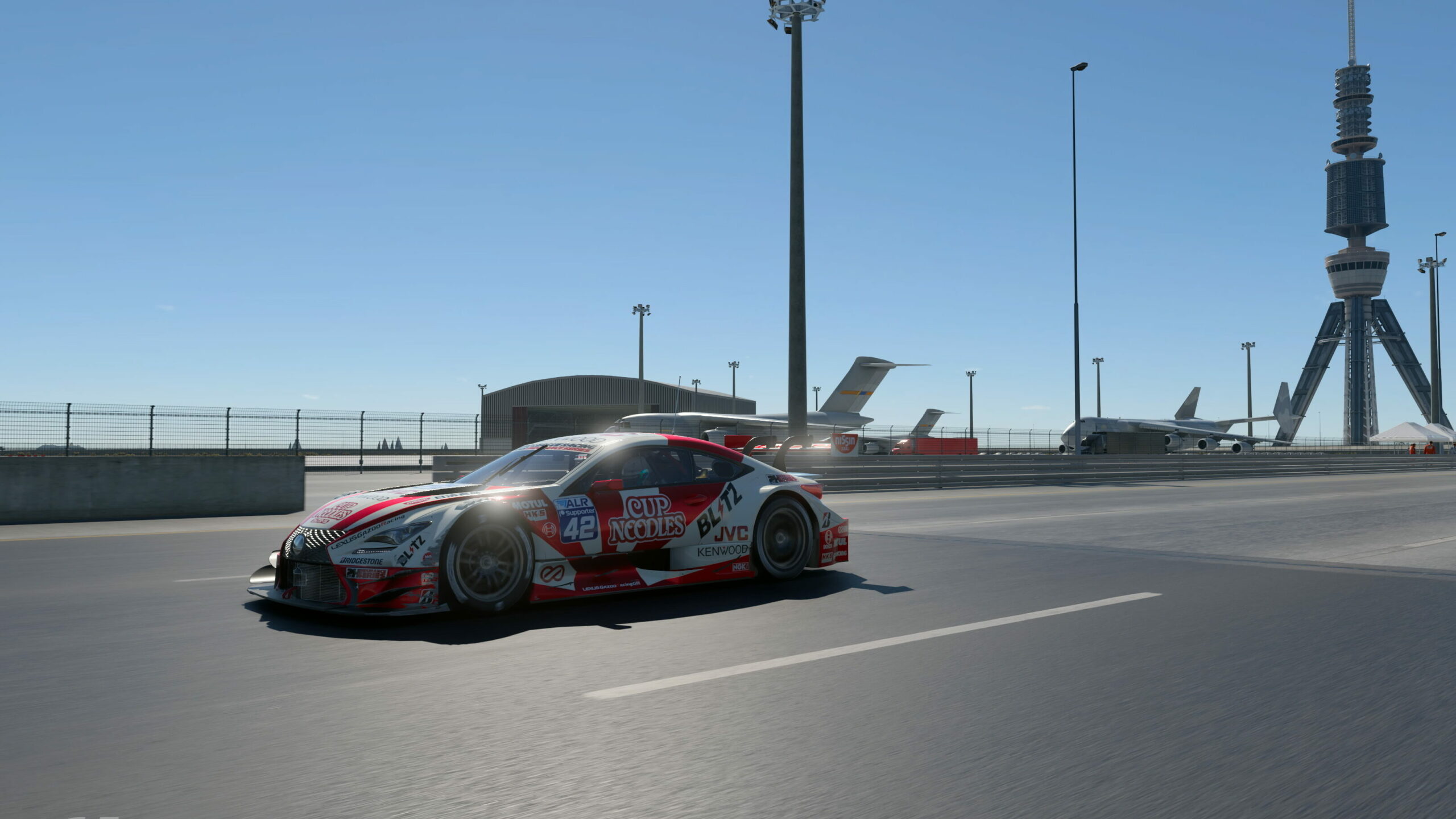Are you wasting fuel because you are shifting too late? Are you giving away acceleration because you are shifting too early? Or if you’re on automatic… can you be competitive in that car?
Here is one way to find the perfect shift points for your car.
Using Data Acquisition and Analysis
The method described here uses data acquisition (telemetry) and data analysis to find out which gear produces the highest possible acceleration at any given speed. Longitudinal g-force is measured for every gear from low rpm’s up to the rev limiter. Plotting the acceleration over speed graphs for every gear shows which gear produces the highest acceleration possible. That way you always know the optimal gear to drive in.
Test Setup
Set up an online lobby with these parameters:
- Track: Special Stage Route X
- Weather: S01, equal conditions
- Fuel multiplier: off
- Tire multiplier: off
- Allowed tires: racing soft (exclude any other tires to reduce the risk of performing the test with the wrong tires)
- BoP: on, no tuning, no setups allowed
Fire up your telemetry software
Test Procedure
Enter the test car and exit the pits
- While exiting the pits double check that your traction control is set to 1 (this is to ensure comparability with others’ measurements)
- Shortly after the pit exit, at the 600m mark line up the car in the center lane facing straight and come to a complete stop.
- Switch your gearbox to automatic (in the driving aid settings)
- Accelerate to top speed, let the automatic shift for you, and hold it up until the first banked corner. Just before entering the banked corner briefly tap the brake – you will need this “reference” when analysing data later.
- While riding the banked corner you have sufficient time to switch your gearbox to manual.
- After the banked corner slow down until you see a color shift in the tarmac.
- Stop so all wheels are on the dark asphalt.
- Shift down to 1st gear and then let go of the brake
- Give 100% throttle and let the car accelerate until it hits the rev limiter
- Release the throttle and let the car coast down until the color of the rev indicator is completely off.
- Shift up one gear
- Repeat at “give 100% throttle” for all gears the car has.
- In the last gear you’re most likely not going to hit the rev limiter. You can stop once you’ve reached the top speed of the car. Or when it doesn’t really accelerate any more.
- Bring the car to a stop and do it once over from “Shift down to 1st gear and then let go of the brake”. This should be somewhere before the 5.000m mark
- Finish the lap to have GT7 logger actually save the data acquired into a file.
Data Analysis
Load this workbook into MoTeC i2:
Then open the data just acquired. It should look something like this (this is data for the Lexus ’16 Gr.2)

A brief description of the graphs on screen:
- Top left (blue): speed
- Second (purple): engine rpms
- Third (orange): longitudinal g-force
- Fourth (green/yellow): throttle and brake position
- Fith (turquoise): gear
- To the right (orange): graph longitudinal g-force over speed
- Bottom (purple with green frame): position within the entire data file

When you zoom into the first acceleration you can see that the auto gear box is shifting shortly after 8.600 rpms:
While we’re here we can grab the top speed – there are 4 different “top” speeds to read:
- the one before starting the climb up the “hill”
- the lowest speed while climbing
- the highest speed while descending
- the equilibrium after the hill, shortly before the banked corner.
Now on to finding the optimal gear change… In the overview bar in the bottom of the screen select the range of first and second gear after the banked corner.

When putting the cursor onto the section of first gear and move it until the g force meter goes below the line made of second gear. In this case 8.990 rpms.

So basically automatic is shifting 400 rpms too soon for maximum acceleration.
Lets see second gear.
Shift the selected time range to show 2nd and 3rd gear and proceed as above.

Here the optimal shift is at 8.930 rpms,
For 3rd to 4th it is 8.790

4th to 5th is at 8.750

And finally 5th to 6th is at 8.650

You have a second measurement in the file to verify there were no errors.
Those are the raw numbers.
To make it more practical also note the speeds at which to shift because speed is much easier to read on GT7’s HUD than engine rpms. And you will probably agree that it is impossible to read the revolutions in more detail than 250 rpms increments. At least I can’t.

Comments are closed